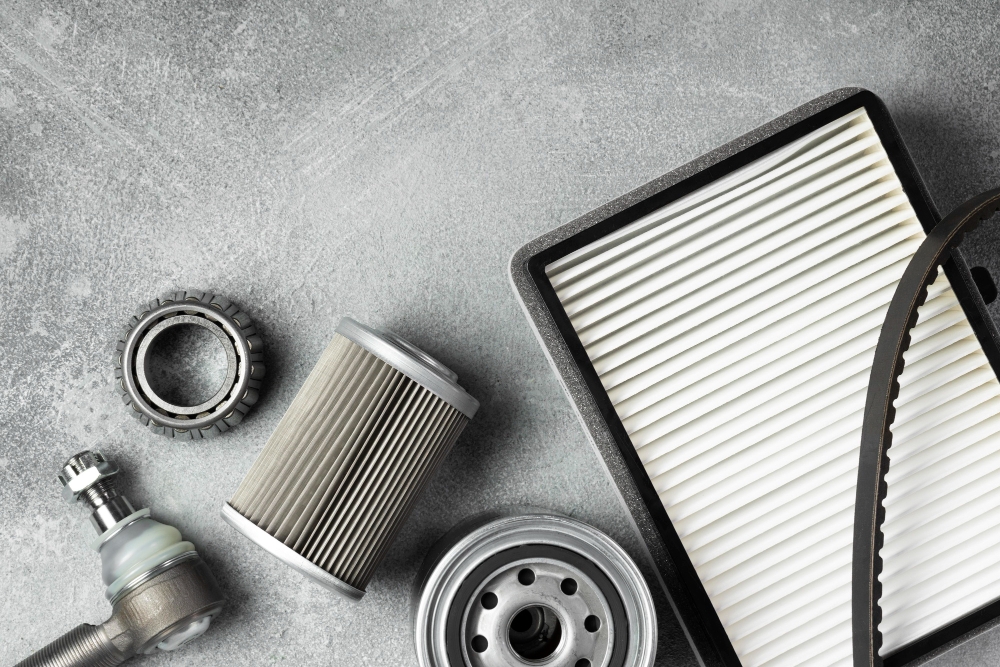Whether you’re a car owner who does occasional maintenance or a serious DIY mechanic, having the right automotive supplies is crucial. The right parts and tools make repairs faster, safer, and more reliable. In this guide, we’ll walk you through the core categories of automotive supplies, how to choose quality products, and tips for maintaining them.
What Automotive Supplies Cover
When we talk about automotive supplies, we refer to components, tools, and accessories that support maintenance, repair, and enhancement of vehicles. This includes:
- Fluids & lubricants (engine oil, brake fluid, coolants)
- Filters (oil, air, fuel, cabin)
- Belts, hoses & clamps
- Brake parts
- Electrical & lighting components
- Gaskets, seals & fasteners
- Tools & diagnostic gear
- Consumables & accessories (rags, cleaners, drip pans)
These supplies form the backbone of most vehicle upkeep tasks.
Fluids & Lubricants
Fluid selection is among the most important decisions in automotive care. The engine requires oil with the correct viscosity and additive package. Brake fluid must meet safety ratings for your braking system. Coolant (antifreeze) is essential to prevent overheating or freeze damage. Power steering, transmission, and differential fluids also require the right specifications. Always choose fluids labeled to meet the manufacturer’s standards. Poor or incorrect fluids lead to performance loss or damage.
Filters, Gaskets & Seals
Clean filters and tight seals protect crucial systems. Oil filters trap engine debris; air filters keep the intake breathable; fuel filters prevent contaminants; cabin filters improve air quality. Gaskets and seals prevent leaks in engines, transmissions, and coolant systems. When replacing filters, always use matching sizes and ratings. Inspect gaskets and seals for deformation or aging before reuse. A weak gasket can undermine a brand-new part.
Belts, Hoses & Clamps
These supplies transmit power and carry fluids. Serpentine belts drive alternators, water pumps, and power steering. Hoses channel coolant, fuel, and vacuum. Clamps secure hoses at fittings. Choose materials rated for heat, pressure, and chemical exposure. Replace cracked, bulged, or hardened hoses proactively. Use proper clamp types and torque—not overtightened, not loose—for secure, leak-free assemblies.
Brake & Stopping Components
Brake parts are safety-critical automotive supplies. Pads, rotors, calipers, hardware kits, and brake fluid all must match your vehicle’s specs. Upgrades should match system pressure, heat tolerance, and wear ratings. Always bleed brakes properly after installing new parts. Clean and lubricate contact points, and never mix incompatible pad compounds or fluid types. Quality matters far more here than cost.
Electrical Components & Lighting
Modern vehicles rely heavily on electronics. Batteries, alternators, fuses, relays, wiring, bulbs, and connectors all fall under automotive supplies. Choose parts rated for correct voltage and current. Use secure connectors and proper gauge wires. For lighting, match color temperature, brightness, and durability. Always check polarity and grounding in wiring jobs. A bad electrical part can cause intermittent problems that are frustrating to diagnose.
Tools, Diagnostics & Consumables
Having the right tools transforms good parts into a successful repair. Torque wrenches, socket sets, diagnostic scanners, multimeters, jacks, stands, and inspection lights are part of the essential toolkit. Consumables like shop towels, sealants, penetrating oil, and lubricants support the work. Combine quality supplies with proper technique for reliable results.
How to Choose Quality Automotive Supplies
To invest wisely, look for:
-
Specification matching: Use manufacturer part numbers, ratings, and tolerances
-
Material & construction: Corrosion resistance, proper alloys, quality manufacturing
-
Compatibility: Correct sizes, interfaces, connectors
-
Warranty & reputation: Trusted brands often back their parts with support
-
Availability of replacement parts: Easier future maintenance
Buying cheap parts for low-stress systems might be safe, but critical systems (brakes, engine, electrical) require premium supplies.
Maintenance & Storage Tips for Supplies
Even unused automotive supplies degrade. Store fluids upright, sealed, in cool dry places. For filters, keep in original packaging to prevent contamination. Keep belts and hoses away from sunlight or ozone sources. Check gaskets and seals for deformation from stacking weight. Tools should be cleaned and oiled before storage. Use a FIFO (first in, first out) system for consumables. Inspection before use is always wise.
Building a Basic Automotive Supply Kit
A functional supply kit might include:
- Common oils, brake fluid, coolant
- Filters matching your vehicle
- A couple of belts and a hose or two
- Spare clamps, gaskets, seals
- Basic diagnostic tools (multimeter, code reader)
- Essential hand tools and cleaners
- Jack, stands, and safety gear
With these supplies ready, many minor repairs and emergencies become manageable.


